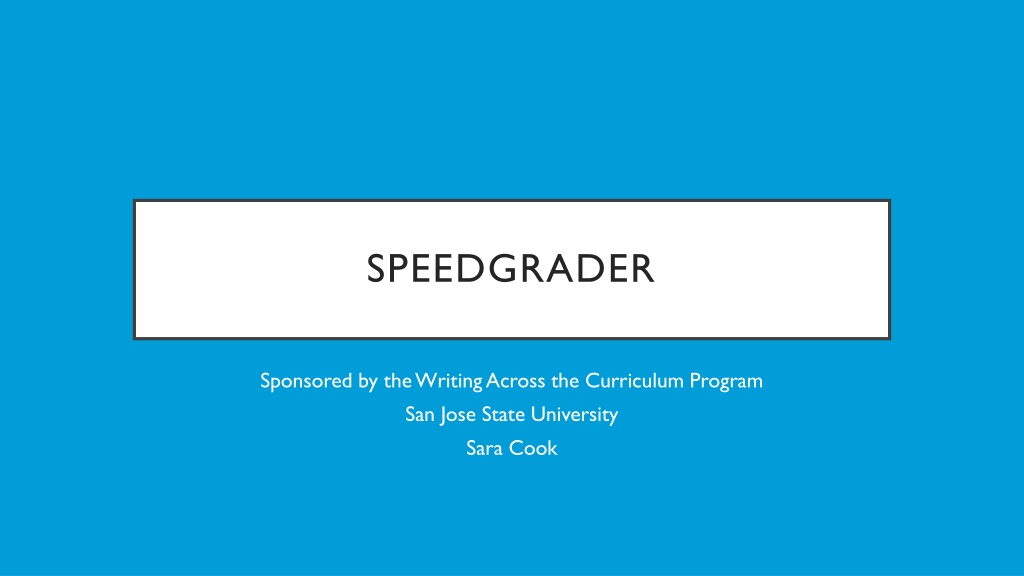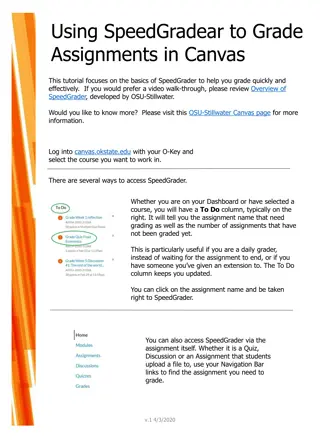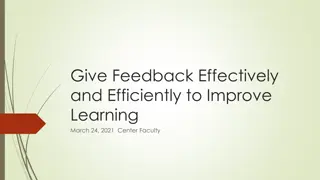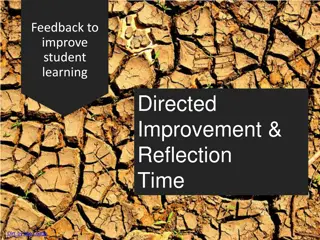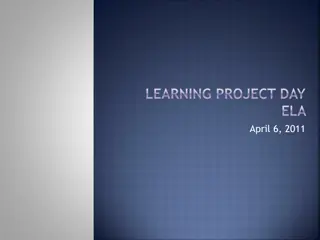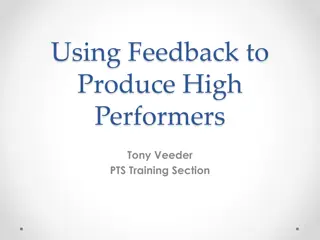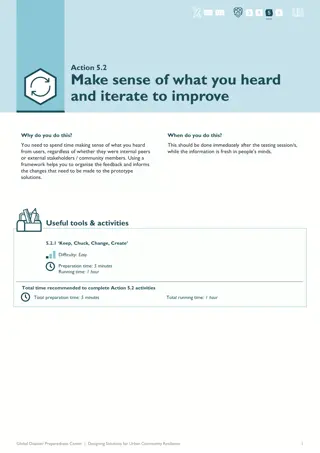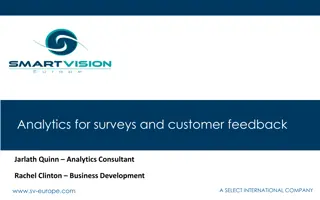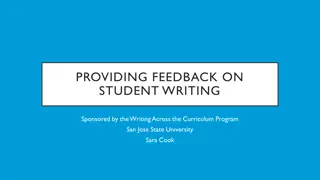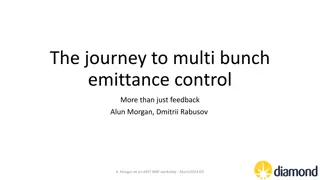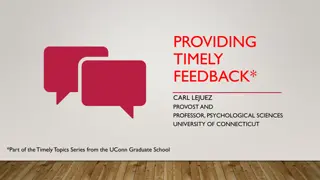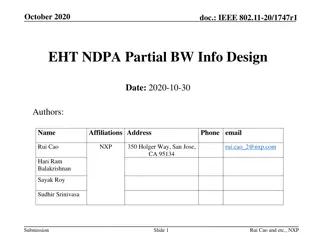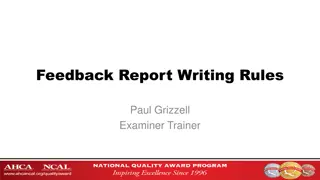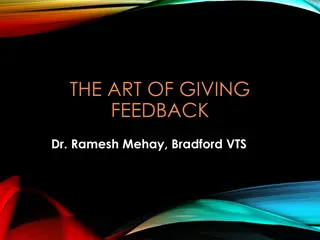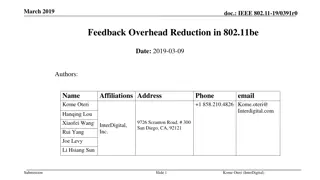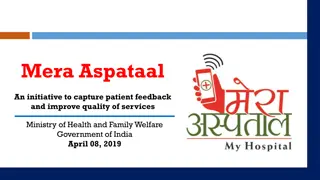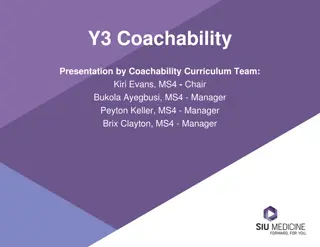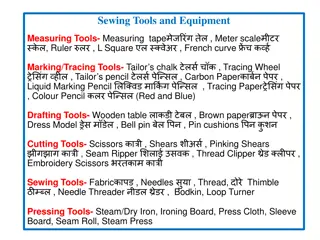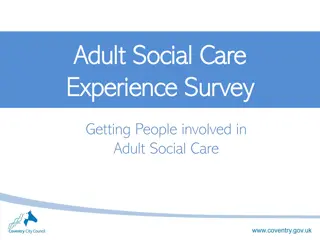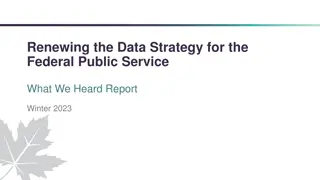Enhancing Feedback with SpeedGrader Tools
Explore the SpeedGrader tools provided by the Writing Across the Curriculum Program at San Jose State University. Discover how to customize settings, use annotation tools for in-text feedback, and provide culminating feedback through assignment comments, media comments, and rubrics. Real-world examples and common questions are also covered to help you maximize the effectiveness of feedback using SpeedGrader.
Download Presentation

Please find below an Image/Link to download the presentation.
The content on the website is provided AS IS for your information and personal use only. It may not be sold, licensed, or shared on other websites without obtaining consent from the author. Download presentation by click this link. If you encounter any issues during the download, it is possible that the publisher has removed the file from their server.
E N D
Presentation Transcript
SPEEDGRADER Sponsored by the Writing Across the Curriculum Program San Jose State University Sara Cook
AGENDA 1. SpeedGrader Settings 2. In-Text Feedback: The Annotation Tools 3. Culminating Feedback: Assignment Comments, Media Comments, and Rubric 4. Examples 5. Questions
SETTINGS SETTINGS ICON
SETTINGS SETTINGS ICON SETTING OPTIONS
SETTINGS SETTING TO HIDE STUDENT NAMES
SETTINGS SETTING TO HIDE STUDENT NAMES SETTING TO REVEAL KEYBOARD SHORTCUTS
IN-TEXT FEEDBACK: THE ANNOTATION TOOLS
IN-TEXT FEEDBACK: THE ANNOTATION TOOLS Pindrop Highlight Write Text Strikethrough Free Draw Box
IN-TEXT FEEDBACK: THE ANNOTATION TOOLS COLOR SELECTION
IN-TEXT FEEDBACK: THE ANNOTATION TOOLS COLOR SELECTION OPTIONAL COMMENTS
PINDROP TOOL The Pindrop calls attention to a geographical area of the paper. It does not identify specific text.
PINDROP TOOL The Pindrop calls attention to a geographical area of the paper. It does not identify specific text. This tool is most useful for providing feedback on more global issues (e.g. organization or analysis) that do not require identifying specific text.
PINDROP TOOL The Pindrop calls attention to a geographical area of the paper. It does not identify specific text. This tool is most useful for providing feedback on more global issues (e.g. organization or analysis) that do not require identifying specific text. Remember: Best practice is to frame your comments as questions, not statements, in order to encourage students to reflect on the choices they ve made and participate in the assessment process.
HIGHLIGHTING TOOL The highlighting tool identifies specific textual choices the student has made. This makes it useful for providing feedback on more local issues like syntax and diction.
WRITING TOOL The Writing tool does not identify specific text in the paper, but has the benefit of being more immediately visible to the student.
WRITING TOOL The Writing tool does not identify specific text in the paper, but has the benefit of being more immediately visible to the student. This tool is useful for making comments on chronic issues and matters pertaining to essay geography. At this point in your essay I should understand what your governing argument is, but I don t. Where is your thesis/roadmap?
STRIKETHROUGH TOOL Like the highlighting tool, the strikethrough tool identifies specific text. Therefore, it is useful in providing feedback on local issues like syntax and diction.
STRIKETHROUGH TOOL Like the highlighting tool, the strikethrough tool identifies specific text. Therefore, it is useful in providing feedback on local issues like syntax and diction. While in this screenshot the strikethrough tool identifies wordiness, it can also send a powerful message by striking through an entire paragraph.
FREE DRAW TOOL The free drawing tool is mostly useful when providing feedback on math or sciences work (e.g. drawing and equation, carbon ring, etc.). In student writing, it can be used to encourage or celebrate great work (think a big yellow smiley face, or stars).
BOX TOOL The box tool allows for identifying blocks of text in a way that is less visually stimulating than highlighting. This makes it useful for providing feedback on short passages of text (i.e. a few sentences or a paragraph).
BOX TOOL The box tool allows for identifying blocks of text in a way that is less visually stimulating than highlighting. This makes it useful for providing feedback on short passages of text (i.e. a few sentences or a paragraph). This tool is also helpful if there is one paragraph in the paper that is representative of the issues ubiquitous to the text. The paragraph could be boxed with a detailed comment, with no further annotations needed in the paper.
THE TENETS OF EFFECTIVE FEEDBACK Goal of feedback: to help the student improve, by detailing his/her/their strengths and weaknesses. 1. Identify both strengths and weaknesses. 2. Criticize both content and prose. 3. Provide some feedback, but not too much. 4. Mark patterns of error or weakness, when possible. 5. Provide feedback that is actionable and specific.
COLOR CODING Consider focusing your feedback, and helping the student improve, by creating a color-coding system using the annotation tools.
COLOR CODING Consider focusing your feedback, and helping the student improve, by creating a color-coding system using the annotation tools.
COLOR CODING The color-coding explanation can be written in 1) the comment of the annotation (see previous slide), or 2) can be written in the Assignment Comments for the paper, like the example here.
COLOR CODING The color-coding explanation can be written in 1) the comment of the annotation (see previous slide), or 2) can be written in the Assignment Comments for the paper, like the example here. It is helpful to have a comment bank, or a comment frame, to copy and paste.
ANNOTATION COMMENTS If the annotation is identifying a pattern of error or weakness, write the feedback in the comment box of the first instance in the pattern.
ANNOTATION COMMENTS If the annotation is identifying a pattern of error or weakness, write the feedback in the comment box of the first instance in the pattern. After this, mark the problem with the annotation tool, but no further comments are needed.
ANNOTATION COMMENTS If the annotation is identifying a pattern of error or weakness, write the feedback in the comment box of the first instance in the pattern. After this, mark the problem with the annotation tool, but no further comments are needed. Consider visual noise: in this example, the Pindrop is more effective than, for example, boxing each paragraph that lacks evidence.
ANNOTATION COMMENTS Consider Providing Informational Links with In-Text Comments You are having trouble synthesizing your sources, which has resulted in unconvincing evidence for your thesis. Please review synthesizing sources for your future essays: https://www.simplypsychology.org/synthesis ing.html
ANNOTATION COMMENTS Consider Providing Informational Links with In-Text Comments You are having trouble synthesizing your sources, which has resulted in unconvincing evidence for your thesis. Please review synthesizing sources for your future essays: https://www.simplypsychology.org/synthesis ing.html Course text Style Manual Writing Center Homegrown Handouts
CREATE A COMMENT BANK Create a document with complete comments, or sentence frames, or links, to copy/paste into SpeedGrader annotation comments.
CREATE A COMMENT BANK Create a document with complete comments, or sentence frames, or links, to copy/paste into SpeedGrader annotation comments. Note: A comment bank can become unwieldy if you let it. Make sure your bank is focused on what is most important in the assignment.
CREATE A COMMENT BANK Create a document with complete comments, or sentence frames, or links, to copy/paste into SpeedGrader annotation comments. Pattern of error = sentence fragments. Please review this issue here,and proofread your next essay for this error. Let me know if you need help with this. Note: A comment bank can become unwieldy if you let it. Make sure your bank is focused on what is most important in the assignment. When possible, borrow language from the rubric.
IMPORTANT TO NOTE 1. The annotation tools are not available if the student submits the assignment as a text entry.
IMPORTANT TO NOTE 1. The annotation tools are not available if the student submits the assignment as a text entry. 2. A comment bank is faster and easier with dual screens.
CULMINATING FEEDBACK: ASSIGNMENT COMMENTS, MEDIA COMMENTS, AND RUBRICS
ASSIGNMENT COMMENTS Best Practices Begins with a strength Has an organizational strategy For example, critique of content followed by critique of prose
ASSIGNMENT COMMENTS Best Practices Begins with a strength MOST IMPORTANTLY: Comments are anchored by in-text feedback: Directing students to in-text examples (by referring to page numbers or annotations) helps them translate the broader final comments into specific textual choices. Has an organizational strategy For example, critique of content followed by critique of prose Weak analysis See Pindrop pg. 2
ASSIGNMENT COMMENTS Consider Using Bullet Points Strengths: - Critical analysis (see pgs. 2 & 4 Pindrops) - Academic, reliable sources (see References) Weaknesses: - Introductory paragraph (see pg.1) - Patterns of grammatical errors: verb-tense shifts (yellow, pg. 3) and comma errors (green, pgs. 1 & 2) (Or sometimes The Good, The Bad, and The Ugly )
ASSIGNMENT COMMENTS Consider soliciting your students Have your students use the assignment comments box to focus your feedback. What is something they had trouble with in the assignment? Or, what is something they worked hard on and want their success validated?
ASSIGNMENT COMMENTS Consider soliciting your students Have your students use the assignment comments box to focus your feedback. What is something they had trouble with in the assignment? Or, what is something they worked hard on and want their success validated? Student reflection = good pedagogy! This could be a requirement included on the assignment sheet.
ASSIGNMENT COMMENTS: WISE FEEDBACK Breaking the Cycle of Mistrust: Wise Interventions to Provide Critical Feedback Across the Racial Divide (Yaeger et al., 2014) Wise Feedback: 1. Communicate high expectations. I know it feels like this is a very challenging task I m asking you to do - and it is. 2. Explain that you believe the student can meet the expectations. Your work to this point demonstrates that you already can do _____ and ___ well, so I know that you are capable of meeting the expectations for the final draft. 3. Provide actionable feedback that demonstrates support. The feedback I gave you on your draft is where you should start as you write the next version - I look forward to reading your final paper!
ASSIGNMENT COMMENTS: COMMENT LIBRARY Benefit: Fast and Easy. Drawback: Only one comment from the library is allowed. Useful to insert a comment frame, to help keep your feedback focused. Directions here
POETRY BREAK An Error Message Just for You You are not a Roomba Or Rosey from The Jetsons Or Pacman or Inspector Gadget or A Tesla with a vanity plate (they all have vanity plates) You re more Florence than Machine More holy mother than motherboard Here for much more than to be user friendly So take this as a reminder flashing on the screen in Yellows and reds To power down And let your systems process Because even an Optimus in her prime Such as you Is not designed to constantly operate At full capacity @maryoliversdrunkcousin
MEDIA COMMENTS Recording video feedback can make it more personal (which students like).
MEDIA COMMENTS Recording video feedback can make it more personal (which students like). This method is particularly useful for commenting on really great and/or improved work (insert cute dog, dancing child, fun song ).
MEDIA COMMENTS Recording video feedback can make it more personal (which students like). This method is particularly useful for commenting on really great and/or improved work (insert cute dog, dancing child, fun song ). The speech-to-text function creates too much editing work.
MEDIA COMMENTS Evaluating Written, Audio and Video Feedback in Higher Education Summative Assessment Tasks by Josh McCarthy Research study: McCarthy examines the use of audio, video and written feedback, to establish the advantages and disadvantages of each technique, and to determine which model provides students with more insight into their academic performance (McCarthy 153). Conclusions: There is no one size fits all feedback model when it comes to assessment in higher education. However, when possible, educators should match the feedback model with the genre of the assignment. 66% of students preferred video feedback because it provided more in-depth analysis of their academic performance in assignments, which were largely visual-based (McCarthy 166). 22% preferred written feedback, and 12% preferred audio feedback.
COMPLETING THE RUBRIC HOW DO I USE FREE-FORM COMMENTS INSTEAD OF RATINGS IN A RUBRIC ON SPEEDGRADER? HOW DO I USE A RUBRIC TO GRADE SUBMISSIONS IN SPEEDGRADER?
